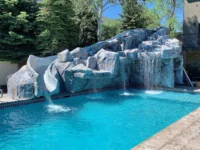Nose plugs for swimming – Designed to enhance your swim experience, these innovative devices provide both comfort and security. Whether you’re a professional athlete or a casual swimmer, our top-notch nose plugs will ensure a hassle-free and enjoyable time in the water. Dive into this article as we explore the benefits, features, and different types of nose plugs available, helping you find the perfect fit for your needs.
1. Exploring the Need for Nose Plugs in Swimming
Are you tired of water constantly rushing up your nasal passages while you’re trying to enjoy a refreshing swim? Look no further! In this comprehensive guide, we will delve into the world of nose plugs for swimming. These ingenious devices are specifically designed to enhance your swim experience by providing both comfort and security.
Swimming can be an invigorating and enjoyable activity, but the constant inhalation of water can quickly turn it into an uncomfortable and frustrating experience. Whether you’re a professional athlete or a casual swimmer, the need for nose plugs becomes evident when you consider the potential risks and annoyances associated with water entering your nasal cavity.
Water inhalation: When water enters your nose during swimming, it can lead to a range of issues. Inhaling water can cause discomfort and irritation in the nasal passages, leading to coughing, sneezing, and even sinus infections.
Impeded breathing: The sensation of water rushing up your nose can disrupt your breathing rhythm, affecting your overall performance and enjoyment in the water.
Reduced focus and distraction: Constantly worrying about water entering your nose can distract you from your swimming technique, reducing your focus and potentially compromising your performance.
Nose plugs are the perfect solution to combat these challenges. By creating a barrier between your nasal passages and the water, nose plugs help prevent the entry of water and allow you to swim with ease and confidence.
In the following sections, we will explore the numerous benefits of using nose plugs for swimming, discuss the different types available, guide you in choosing the right ones for your needs, and provide tips and tricks for getting comfortable with nose plugs. So, let’s dive in and discover how nose plugs can revolutionize your swim experience!
2. The Benefits of Using Nose Plugs for Swimming
Nose plugs offer a wide array of benefits for swimmers of all levels, ensuring a more enjoyable and comfortable experience in the water. Let’s explore the advantages of incorporating nose plugs into your swimming routine:
1. Preventing water inhalation:
One of the primary benefits of nose plugs is their ability to effectively prevent water from entering your nasal passages. By creating a watertight seal, nose plugs significantly reduce the risk of inhaling water while swimming. This not only eliminates the discomfort and irritation caused by water in your nasal cavity but also helps to prevent potential sinus infections.
2. Enhancing breathing efficiency:
When water rushes up your nose, it can disrupt your breathing rhythm and impede proper airflow. Nose plugs eliminate this issue, allowing you to breathe more efficiently while swimming. By ensuring unobstructed airflow through your nostrils, nose plugs help you maintain a steady breathing pattern, enhancing your overall swimming performance.
3. Increasing focus and concentration:
With the assurance that water won’t enter your nose, you can swim with improved focus and concentration. Nose plugs eliminate the constant worry and distraction of water inhalation, allowing you to fully immerse yourself in your swim strokes, technique, and overall experience. This enhanced focus can lead to improved performance and enjoyment in the water.
4. Suitable for various swimming activities:
Nose plugs are versatile accessories that can be used for a wide range of swimming activities. Whether you’re training for a competitive swim meet, practicing your strokes in the pool, snorkeling in the ocean, or simply enjoying a leisurely swim, nose plugs provide a universal solution for enhanced comfort and protection.
Now that we’ve explored the benefits of using nose plugs, it’s time to delve into the different types available. In the next section, we will discuss the various nose plug options on the market, each with its own unique features and advantages. Stay tuned!
3. Understanding Different Types of Nose Plugs
When it comes to nose plugs for swimming, there is a wide variety of options available to cater to different preferences and needs. Let’s explore the different types of nose plugs and their unique features:
1. Silicone Nose Plugs:
Silicone nose plugs are a popular choice due to their flexibility and comfortable fit. They are made from soft, hypoallergenic silicone material that molds to the shape of your nostrils, creating a secure seal. Silicone nose plugs are durable, easy to clean, and suitable for both recreational and competitive swimmers.
2. Foam Nose Plugs:
Foam nose plugs are another commonly used type of nose plug. They are made from soft, lightweight foam that gently expands to fit your nostrils, providing a snug and secure fit. Foam nose plugs are disposable and offer a cost-effective option for swimmers who prefer a softer feel.
3. Ergonomic Nose Plugs:
Ergonomic nose plugs are designed with added features for enhanced comfort and performance. They often have a contoured shape that conforms to the natural curves of your nostrils, offering a more personalized fit. Some ergonomic nose plugs also come with adjustable straps or clips for a customizable and secure fit.
4. String Nose Plugs:
String nose plugs, also known as lanyard nose plugs, feature a small string or lanyard that connects the two plugs, allowing them to be worn around your neck when not in use. This design ensures that you won’t misplace your nose plugs during breaks or when transitioning between swimming and other activities.
5. Nose Clip and Plug Combos:
For swimmers who want the benefits of both nose clips and nose plugs, there are combination options available. These innovative designs typically feature a nose clip with attached plugs, providing dual protection against water inhalation.
Each type of nose plug has its own advantages and considerations. In the next section, we will guide you in choosing the right nose plugs for your needs, ensuring a comfortable and secure swimming experience. Stay tuned!
4. How to Choose the Right Nose Plugs for Your Needs
With the wide array of nose plugs available, it’s important to choose the ones that best suit your specific needs and preferences. Here are some factors to consider when selecting the right nose plugs:
1. Size and Fit:
Ensuring the proper fit is crucial for optimal comfort and effectiveness. Nose plugs come in various sizes, so it’s important to choose a pair that fits snugly in your nostrils without causing discomfort or impeding breathing. Consider trying different sizes to find the perfect fit.
2. Material:
The material of the nose plugs can affect both comfort and durability. Silicone and foam are commonly used materials, each with its own advantages. Silicone offers flexibility and a soft feel, while foam provides a lightweight and disposable option. Consider which material suits your preferences and needs.
3. Ease of Use:
Look for nose plugs that are easy to insert and remove. Some designs feature a simple push-and-twist mechanism, while others may require adjusting straps or clips. Choose a style that you find convenient and user-friendly.
4. Durability:
If you swim frequently or for extended periods, it’s important to choose nose plugs that are durable and long-lasting. Consider the quality of the material, as well as customer reviews and recommendations, to ensure that your nose plugs will withstand regular use.
5. Personal Preference:
Ultimately, personal preference plays a role in selecting the right nose plugs. Some swimmers may prefer a specific design, color, or additional features like waterproof cases or storage containers. Consider these factors to find nose plugs that align with your personal taste.
By taking these factors into account, you can choose nose plugs that provide a comfortable and secure fit, enhancing your overall swimming experience. In the next section, we will provide you with tips and tricks to get comfortable with nose plugs, ensuring a smooth transition into using them during your swim sessions. Stay tuned!
5. Getting Comfortable with Nose Plugs: Tips and Tricks
Transitioning to using nose plugs during your swim sessions may require some adjustment, especially if you haven’t used them before. To help you get comfortable with nose plugs, here are some helpful tips and tricks:
1. Practice at Home:
Before heading to the pool or open water, spend some time at home practicing wearing your nose plugs. Insert them into your nostrils and get accustomed to the sensation. This will help you become more comfortable with them before your actual swim session.
2. Find the Right Fit:
Ensure that you have the correct size and fit for your nose plugs. A snug but not overly tight fit will provide the best comfort and effectiveness. Experiment with different sizes and designs to find the ones that work best for you.
3. Insertion Technique:
Proper insertion is key to a secure and comfortable fit. Gently place the nose plugs into your nostrils, making sure they cover the openings fully. Adjust them as needed to create a watertight seal without causing discomfort or impeding breathing.
4. Gradual Increase in Usage:
If you’re not accustomed to wearing nose plugs, it’s a good idea to gradually increase the duration of your usage. Start with shorter swimming sessions and gradually extend the time as you become more comfortable with them.
5. Relax and Focus on Breathing:
Once you have your nose plugs in place, try to relax and focus on your breathing. Remind yourself that the nose plugs are there to provide comfort and prevent water inhalation. Take slow, deliberate breaths, and allow yourself to adjust to the new sensation.
6. Rinse and Dry:
After each swim session, rinse your nose plugs with clean water to remove any chlorine or salt residue. Allow them to air dry thoroughly before storing them in a clean and dry place. Proper maintenance will help prolong their lifespan and keep them hygienic.
By following these tips and tricks, you can quickly adapt to using nose plugs and enjoy a comfortable and secure swimming experience. In the next section, we will discuss how to ensure a secure fit with nose plugs, including proper usage and maintenance techniques. Stay tuned!
6. Ensuring a Secure Fit: Proper Usage and Maintenance
To fully reap the benefits of nose plugs, it’s important to ensure a secure fit. Here are some guidelines for proper usage and maintenance of nose plugs:
1. Positioning:
Position the nose plugs correctly to ensure a watertight seal. Place them over the openings of your nostrils, making sure they cover the entire area. Adjust them as needed to create a comfortable fit without causing any discomfort.
2. Adjusting Straps or Clips:
If your nose plugs come with adjustable straps or clips, use them to customize the fit. Ensure that the straps are neither too loose nor too tight, allowing for a secure and comfortable fit without restricting blood flow or causing discomfort.
3. Avoid Forceful Insertion:
Insert the nose plugs gently into your nostrils without applying excessive force. Forcing them in can cause discomfort or even damage the plugs. Remember, a secure fit can be achieved without the need for excessive pressure.
4. Regular Cleaning:
After each use, rinse your nose plugs with clean water to remove any chlorine, salt, or other impurities. Gently scrub them with a mild soap if necessary. Keeping your nose plugs clean will help maintain their effectiveness and prevent the growth of bacteria.
5. Air Drying:
Allow your nose plugs to air dry completely before storing them. Placing them in a well-ventilated area will help prevent the growth of mold or mildew. Avoid storing them while damp, as this can lead to unpleasant odors or deterioration of the material.
6. Storage:
Store your nose plugs in a clean and dry case or container to protect them from dust and damage. Avoid keeping them in direct sunlight or extreme temperatures, as this can affect their durability and effectiveness.
By following these usage and maintenance guidelines, you can ensure a secure fit and prolong the lifespan of your nose plugs. In the next section, we will address common concerns and misconceptions about using nose plugs, providing accurate information to help you make an informed decision. Stay tuned!
7. Overcoming Common Concerns and Misconceptions
Using nose plugs for swimming may raise some concerns and misconceptions. Let’s address these and provide accurate information to help you make an informed decision:
1. Breathing Difficulties:
One common concern is that nose plugs may impede breathing. However, properly fitted nose plugs should not restrict airflow. In fact, they help maintain a consistent breathing pattern by preventing water from entering the nasal passages.
2. Discomfort and Irritation:
Some swimmers worry that nose plugs may cause discomfort or irritation. While it may take a short adjustment period to get used to the sensation, properly fitted nose plugs should not cause any discomfort or irritation. If you experience discomfort, try adjusting the fit or exploring different nose plug options.
3. Dependency on Nose Plugs:
It’s a misconception that using nose plugs will make you dependent on them for swimming. Nose plugs are simply a tool to ensure a comfortable and secure swim. You can choose to use them whenever you want or need, and they do not affect your ability to swim without them.
4. Effectiveness for Competitive Swimming:
Competitive swimmers may wonder if nose plugs are permitted or offer any advantages. In most swimming competitions, nose plugs are allowed unless specified otherwise. They can provide a competitive edge by reducing distractions and enhancing focus, allowing swimmers to perform at their best.
5. Allergies and Sensitivities:
If you have allergies or sensitivities to certain materials, it’s important to choose nose plugs made from hypoallergenic materials like silicone. These materials are less likely to cause allergic reactions and are safe for most individuals.
By addressing these concerns and misconceptions, we aim to provide accurate information about using nose plugs for swimming. In the next section, we will explore the benefits of nose plugs for recreational swimmers, helping you enjoy the water without discomfort. Stay tuned!
8. Nose Plugs for Recreational Swimmers: Enjoying the Water without Discomfort
Nose plugs are not limited to competitive swimmers; they also offer numerous benefits for recreational swimmers. Whether you’re splashing around in the ocean, enjoying a leisurely swim in a local pool, or exploring underwater wonders, nose plugs can greatly enhance your experience. Here’s how:
1. Comfortable Swimming Experience:
Recreational swimmers often prioritize enjoyment and relaxation in the water. Nose plugs provide a comfortable and hassle-free swim by preventing water from entering your nasal passages. You can focus on having fun without the constant annoyance of water rushing up your nose.
2. Enhanced Water Confidence:
For those who are new to swimming or feel less confident in the water, nose plugs can provide a sense of security. Knowing that water won’t enter your nose allows you to feel more at ease and explore the water with confidence.
3. Uninterrupted Underwater Exploration:
If you enjoy snorkeling or exploring underwater environments, nose plugs are essential. They allow you to breathe comfortably through a snorkel or regulator while keeping water out of your nose, enabling you to fully immerse yourself in the beauty beneath the surface.
4. Protection from Contaminated Water:
In certain swimming environments, such as lakes or rivers, water may contain pollutants or contaminants. Nose plugs act as a protective barrier, reducing the risk of inhaling or ingesting potentially harmful substances.
5. Minimized Sinus Discomfort:
Recreational swimmers who are prone to sinus discomfort or infections can benefit greatly from using nose plugs. By preventing water from entering the nasal passages, nose plugs help reduce the risk of sinus irritation and related issues.
Whether you’re a recreational swimmer looking to enhance your water experience or a competitive athlete seeking an edge, nose plugs offer a range of benefits. In the next section, we will explore how nose plugs can be integrated into competitive swimming, aiding performance and focus. Stay tuned!
9. Nose Plugs for Competitive Swimmers: Aiding Performance and Focus
Competitive swimmers are always looking for ways to improve their performance and gain a competitive edge. Nose plugs can play a valuable role in enhancing performance and focus during swimming competitions. Here’s how nose plugs can benefit competitive swimmers:
1. Reduced Distractions:
In a competitive swimming environment, every second counts. The constant worry of water rushing up the nose can be a significant distraction. By wearing nose plugs, swimmers can eliminate this distraction and focus more on their technique, speed, and strategy.
2. Enhanced Focus:
Nose plugs help swimmers maintain a clear mental focus on their race or training session. By preventing water inhalation, swimmers can concentrate on their breathing pattern, stroke technique, and overall performance, leading to improved results.
3. Improved Stroke Efficiency:
With nose plugs, swimmers can maintain a consistent breathing rhythm without interruptions caused by water entering the nasal passages. This allows for better oxygen intake, leading to improved stamina and stroke efficiency in long-distance races.
4. Confidence Booster:
Knowing that water won’t enter their nose can boost swimmers’ confidence, providing a psychological advantage. By feeling secure and comfortable in the water, swimmers can approach their races with a positive mindset and perform at their best.
5. Compliance with Competition Rules:
In most swimming competitions, nose plugs are allowed unless specifically prohibited. Swimmers can use nose plugs to their advantage without worrying about violating any rules, ensuring a fair and level playing field.
For competitive swimmers, every small advantage can make a difference. Nose plugs offer a simple yet effective tool to enhance performance, focus, and confidence in the pool. In the final section, we will explore alternative options for swimmers who may prefer different methods of nose protection. Stay tuned!
10. Exploring Alternatives: When Nose Plugs Aren’t the Right Fit
While nose plugs are a popular choice for many swimmers, they may not be suitable for everyone. It’s essential to explore alternative options for swimmers who prefer different methods of nose protection. Here are some alternatives to consider:
1. Nose Clips:
Nose clips are similar to nose plugs in their purpose of preventing water from entering the nasal passages. They are typically made of plastic or metal and are designed to pinch the nostrils closed. Nose clips provide a secure seal and can be a suitable option for swimmers who find nose plugs uncomfortable or prefer a different sensation.
2. Swim Caps:
While swim caps are primarily used to keep hair out of the face and reduce drag, they can also provide some protection for the nose. Tightly fitting swim caps can create a barrier that reduces the likelihood of water entering the nasal passages. However, it’s important to note that swim caps alone may not provide the same level of protection as nose plugs or clips.
3. Breathing Techniques:
Some swimmers may choose to rely on specific breathing techniques to minimize the risk of water inhalation. Techniques such as bilateral breathing (alternating sides) or exhaling forcefully through the nose while submerged can help reduce the chances of water entering the nasal passages. These techniques require practice and may not be suitable for all swimmers.
4. Avoiding Water Entry:
For swimmers who prefer not to use any accessories, avoiding water entry into the nasal passages can be achieved through careful breath control. By coordinating breaths with head movements and using proper body positioning, swimmers can minimize the risk of water entering their noses. However, this method requires a high level of skill and control.
It’s important to find the method that works best for you and meets your specific needs. Whether it’s nose plugs, clips, swim caps, breathing techniques, or a combination of approaches, the primary goal is to ensure a comfortable and secure swimming experience. We hope this comprehensive guide has provided you with valuable insights into the world of nose plugs for swimming. Happy swimming!
In conclusion, nose plugs for swimming offer a range of benefits for swimmers of all levels. Whether you’re a competitive athlete seeking an edge or a recreational swimmer looking to enhance your water experience, nose plugs can provide a comfortable and secure swimming experience. They prevent water inhalation, enhance breathing efficiency, and increase focus and concentration. With different types available, such as silicone, foam, and ergonomic designs, there is a suitable option for everyone. Proper usage and maintenance ensure a secure fit, while addressing common concerns and misconceptions provides accurate information for making an informed decision.
For competitive swimmers, nose plugs aid in reducing distractions, enhancing focus, and improving stroke efficiency. Recreational swimmers can enjoy the water without discomfort, explore underwater wonders, and gain water confidence. Additionally, alternative options like nose clips, swim caps, and breathing techniques cater to diverse preferences and needs.
Ultimately, the choice of using nose plugs or alternatives depends on personal preference and individual requirements. Regardless of the method chosen, the goal remains the same: to enjoy swimming with comfort and confidence. So, dive in, explore the possibilities, and find the solution that best suits you. Happy swimming!

As a passionate water enthusiast, I’ve spent my life exploring the depths of swimming and sharing my experiences with the world. Stroke Swimming is more than just a blog; it’s a deep dive into the world of swimming. Here, you’ll find a treasure trove of information, tips, and insights to help both beginners and seasoned swimmers enhance their skills, knowledge, and appreciation for this timeless art.




